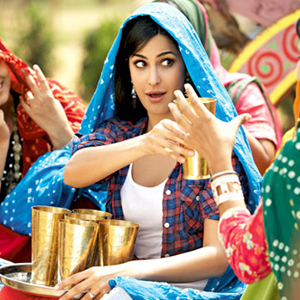Linux Operating System
Introduction
Linux is a Unix-like computer operating system assembled under the model of free and open source software development and distribution. The defining component of any Linux system is the Linux kernel, an operating system kernel first released October 5, 1991 by Linus Torvalds.Linux system distributions may vary in many details of system operation, configuration, and software package selections.
Linux runs on a wide variety of computer hardware, including mobile phones, tablet computers, network routers, televisions, video game consoles, desktop computers, mainframes and supercomputers.Linux is a leading server operating system, and runs the 10 fastest supercomputers in the world. In addition, more than 90% of today's supercomputers run some variant of Linux.
The development of Linux is one of the most prominent examples of free and open source software collaboration: the underlying source code may be used, modified, and distributed—commercially or non-commercially—by anyone under licenses such as the GNU General Public License. Typically Linux is packaged in a format known as a Linux distribution for desktop and server use. Some popular mainstream Linux distributions include Debian (and its derivatives such as Ubuntu), Fedora and openSUSE. Linux distributions include the Linux kernel, supporting utilities and libraries and usually a large amount of application software to fulfill the distribution's intended use.
A distribution oriented toward desktop use may include the X Window System and an accompanying desktop environment such as GNOME or KDE Plasma. Other distributions may include a less resource intensive desktop such as LXDE or Xfce for use on older or less-powerful computers. A distribution intended to run as a server may omit any graphical environment from the standard install and instead include other software such as the Apache HTTP Server and a SSH server like OpenSSH. Because Linux is freely redistributable, it is possible for anyone to create a distribution for any intended use. Commonly used applications with desktop Linux systems include the Mozilla Firefox web browser, the OpenOffice.org or LibreOffice office application suites, and the GIMP image editor.
The main supporting user space system tools and libraries from the GNU Project (announced in 1983 by Richard Stallman) are the basis for the Free Software Foundation's preferred name GNU/Linux.
Shells of Linux
.What is Linux Shell ?
Computer understand the language of 0's and 1's called binary language.
In early days of computing, instruction are provided using binary language, which is difficult for all of us, to read and write. So in Os there is special program called Shell. Shell accepts your instruction or commands in English (mostly) and if its a valid command, it is pass to kernel.
Shell is a user program or it's environment provided for user interaction. Shell is an command language interpreter that executes commands read from the standard input device (keyboard) or from a file.
Shell is not part of system kernel, but uses the system kernel to execute programs, create files etc.
Several shell available with Linux including:
Shell Name
|
Developed by
|
Where
|
Remark
|
BASH ( Bourne-Again SHell )
|
Brian Fox and Chet Ramey
|
Free Software Foundation
|
Most common shell in Linux. It's Freeware shell.
|
CSH (C SHell)
|
Bill Joy
|
University of California (For BSD)
|
The C shell's syntax and usage are very similar to
the C programming language.
|
KSH (Korn SHell)
|
David Korn
|
AT & T Bell Labs
|
--
|
TCSH
|
See the man page.
Type $ man tcsh
|
--
|
TCSH is an enhanced but completely compatible version of the Berkeley UNIX C shell (CSH).
|
Tip: To find all available shells in your system type following command:
$ cat /etc/shells
Note that each shell does the same job, but each understand a different command syntax and provides different built-in functions.
In MS-DOS, Shell name is COMMAND.COM which is also used for same purpose, but it's not as powerful as our Linux Shells are!Any of the above shell reads command from user (via Keyboard or Mouse) and tells Linux Os what users want. If we are giving commands from keyboard it is called command line interface ( Usually in-front of $ prompt, This prompt is depend upon your shell and Environment that you set or by your System Administrator, therefore you may get different prompt ).
Tip: To find your current shell type following command
$ echo $SHELL
History of linux
The History of Linux began in 1991 with the commencement of a personal project by a Finnish student, Linus Torvalds, to create a new operating system kernel.
Since then the resulting Linux kernel has been marked by constant growth throughout its history. Since the initial release of its source code in 1991, it has grown from a small number of C files under a license prohibiting commercial distribution to its state in 2009 of over 370 megabytes of source under the GNU General Public License.[1]
Events leading to creation
The Unix operating system was conceived and implemented by Ken Thompson and Dennis Ritchie (both of AT&T Bell Laboratories) in 1969 and first released in 1970. Its availability and portability caused it to be widely adopted, copied and modified by academic institutions and businesses. Its design became influential to authors of other systems.
In 1983, Richard Stallman started the GNU project with the goal of creating a free UNIX-like operating system.As part of this work, he wrote the GNU General Public License (GPL). By the early 1990s there was almost enough available software to create a full operating system. However, the GNU kernel, called Hurd, failed to attract enough attention from developers leaving GNU incomplete.
Another free operating system project, initially released in 1977, was the Berkeley Software Distribution (BSD). This was developed by UC Berkeley from the 6th edition of Unix from AT&T. Since BSD contained Unix code that AT&T owned, AT&T filed a lawsuit (USL v. BSDi) in the early 1990s against the University of California. This strongly limited the development and adoption of BSD.
In 1986, Maurice J. Bach, of AT&T Bell Labs, published The Design of the UNIX Operating System.This definitive description principally covered the System V Release 2 kernel, with some new features from Release 3 and BSD.
MINIX, a Unix-like system intended for academic use, was released by Andrew S. Tanenbaum in 1987. While source code for the system was available, modification and redistribution were restricted. In addition, MINIX's 16-bit design was not well adapted to the 32-bit features of the increasingly cheap and popular Intel 386 architecture for personal computers.
These factors and the lack of a widely adopted, free kernel provided the impetus for Torvalds's starting his project. He has stated that if either the GNU or 386BSD kernels were available at the time, he likely would not have written his own.
The creation of Linux
Linus Torvalds in 2002
In 1991, in Helsinki, Linus Torvalds began a project that later became the Linux kernel. It was initially a terminal emulator, which Torvalds used to access the large UNIX servers of the university. He wrote the program specifically for the hardware he was using and independent of an operating system because he wanted to use the functions of his new PC with an 80386 processor. Development was done on MINIX using the GNU C compiler, which is still the main choice for compiling Linux today (although the code can be built with other compilers, such as the Intel C Compiler).[citation needed]
As Torvalds wrote in his book Just for Fun,he eventually realized that he had written an operating system kernel. On 25 August 1991, he announced this system in a Usenet posting to the newsgroup "comp.os.minix.":
Hello everybody out there using minix -
I'm doing a (free) operating system (just a hobby, won't be big and professional like gnu) for 386(486) AT clones. This has been brewing since april, and is starting to get ready. I'd like any feedback on things people like/dislike in minix, as my OS resembles it somewhat (same physical layout of the file-system (due to practical reasons) among other things).
I've currently ported bash(1.08) and gcc(1.40), and things seem to work. This implies that I'll get something practical within a few months, and I'd like to know what features most people would want. Any suggestions are welcome, but I won't promise I'll implement them :-)
Linus (torvalds@kruuna.helsinki.fi)
PS. Yes – it's free of any minix code, and it has a multi-threaded fs. It is NOT portable (uses 386 task switching etc), and it probably never will support anything other than AT-harddisks, as that's all I have :-(.
—Linus Torvalds
The name
Linus Torvalds had wanted to call his invention Freax, a portmanteau of "freak", "free", and "x" (as an allusion to Unix). During the start of his work on the system, he stored the files under the name "Freax" for about half of a year. Torvalds had already considered the name "Linux," but initially dismissed it as too egotistical.
In order to facilitate development, the files were uploaded to the FTP server (ftp.funet.fi) of FUNET in September 1991. Ari Lemmke, Torvald's coworker at the Helsinki University of Technology (HUT) who was one of the volunteer administrators for the FTP server at the time, did not think that "Freax" was a good name. So, he named the project "Linux" on the server without consulting Torvalds. Later, however, Torvalds consented to "Linux".
To demonstrate how the word "Linux" should be pronounced (English pronunciation: /ˈlɪnəks/ lin-əks).
Linux under the GNU GPL
Torvalds first published the Linux kernel under its own licence, which had a restriction on commercial activity.
In the "Notes for linux release 0.01", Torvalds lists the GNU software that is required to run Linux.
Sadly, a kernel by itself gets you nowhere. To get a working system a shell, compilers, a library etc are needed. These are separate parts and may be under a stricter (or even looser) copyright. Most of the tools used with linux are GNU software and are under the GNU copyleft. These tools aren't in the distribution - ask me (or GNU) for more info.
In 1992, he suggested releasing the kernel under the GNU General Public License. He first announced this decision in the release notes of version 0.12. In the middle of December 1992 he published version 0.99 using the GNU GPL.
Linux and GNU developers worked to integrate GNU components with Linux to make a fully functional and free operating system.
Torvalds has stated, “making Linux GPL'd was definitely the best thing I ever did.”
GNU/Linux naming controversy
The designation "Linux" was initially used by Torvalds only for the Linux kernel. The kernel was, however, frequently used together with other software, especially that of the GNU project. This quickly became the most popular adoption of GNU software. In June 1994 in GNU's bulletin, Linux was referred to as a "free UNIX clone", and the Debian project began calling its product Debian GNU/Linux. In May 1996, Richard Stallman published the editor Emacs 19.31, in which the type of system was renamed from Linux to Lignux. This spelling was intended to refer specifically to the combination of GNU and Linux, but this was soon abandoned in favor of "GNU/Linux".
This name garnered varying reactions. The GNU and Debian projects use the name, although most people simply use the term "Linux" to refer to the combination.
Official mascot
Tux
Torvalds announced in 1996 that there would be a mascot for Linux, a penguin. This was due the fact when they were about to select the mascot, Torvalds did mention he was bitten by a Little Penguin on a visit to the National Zoo & Aquarium, Canberra, Australia. Larry Ewing provided the original draft of today's well known mascot based on this description. The name Tux was suggested by James Hughes as derivative of Torvalds' UniX.
Kernel
There are many other well-known maintainers for the Linux kernel beside Torvalds such as Alan Cox and Marcelo Tosatti. Cox maintained version 2.2 of the kernel until it was discontinued at the end of 2003. Likewise, Tosatti maintained version 2.4 of the kernel until the middle of 2006. Andrew Morton steers the development and administration of the 2.6 kernel, which was released
on 18 December 2003 in its first stable incarnation. Also the older branches are still constantly improved.
Community
The largest part of the work on Linux is performed by the community: the thousands of programmers around the world that use Linux and send their suggested improvements to the maintainers. Various companies have also helped not only with the development of the Kernels, but also with the writing of the body of auxiliary software, which is distributed with Linux.
It is released both by organized projects such as Debian, and by projects connected directly with companies such as Fedora and openSUSE. The members of the respective projects meet at various conferences and fairs, in order to exchange ideas. One of the largest of these fairs is the LinuxTag in Germany (currently in Berlin), where about 10,000 people assemble annually, in order to discuss Linux and the projects associated with it.
Open Source Development Lab and Linux Foundation
The Open Source Development Lab (OSDL) was created in the year 2000, and is an independent nonprofit organization which pursues the goal of optimizing Linux for employment in data centers and in the carrier range. It served as sponsored working premises for Linus Torvalds and also for Andrew Morton (until the middle of 2006 when Morton transferred to Google). Torvalds works full-time on behalf of OSDL, developing the Linux Kernels.
Companies
Despite being open-source, a few companies profit from Linux. These companies, most of which are also members of the Open Source Development Lab, invest substantial resources into the advancement and development of Linux, in order to make it suited for various application areas. This includes hardware donations for driver developers, cash donations for people who develop Linux software, and the employment of Linux programmers at the company. Some examples are IBM and HP, which use Linux on their own servers, and Red Hat, which maintains its own distribution. Likewise Nokia supports Linux by the development and LGPL licensing of Qt, which makes the development of KDE possible, and by employing some of the X and KDE developers.
Trademark rights
In 1994 and 1995, several people from different countries attempted to register the name "Linux" as a trademark. Thereupon requests for royalty payments were issued to several Linux companies, a step with which many developers and users of Linux did not agree. Linus Torvalds clamped down on these companies with help from Linux International and was granted the trademark to the name, which he transferred to Linux International. Protection of the trademark was later administered by a dedicated foundation, the non-profit Linux Mark Institute. In 2000, Linus Torvalds specified the basic rules for the assignment of the licenses. This means that anyone who offers a product or a service with the name Linux must possess a license for it, which can be obtained through a unique purchase.
In June 2005, a new controversy developed over the use of royalties generated from the use of the Linux trademark. The Linux Mark Institute, which represents Linus Torvalds' rights, announced a price increase from 500 to 5,000 dollars for the use of the name. This step was justified as being needed to cover the rising costs of trademark protection.
In response to this increase, the community became displeased, which is why Linus Torvalds made an announcement on 21 August 2005, in order to dissolve the misunderstandings. In an e-mail he described the current situation as well as the background in detail and also dealt with the question of who had to pay license costs:
[...] And let’s repeat: somebody who doesn’t want to _protect_ that name would never do this. You can call anything "MyLinux", but the downside is that you may have somebody else who _did_ protect himself come along and send you a cease-and-desist letter. Or, if the name ends up showing up in a trademark search that LMI needs to do every once in a while just to protect the trademark (another legal requirement for trademarks), LMI itself might have to send you a cease-and-desist-or-sublicense it letter.
At which point you either rename it to something else, or you sublicense it. See? It’s all about whether _you_ need the protection or not, not about whether LMI wants the money or not.
Finally, just to make it clear: not only do I not get a cent of the trademark money, but even LMI (who actually administers the mark) has so far historically always lost money on it. That’s not a way to sustain a trademark, so they’re trying to at least become self-sufficient, but so far I can tell that lawyers fees to _give_ that protection that commercial companies want have been higher than the license fees. Even pro bono lawyers charge for the time of their costs and paralegals etc.
—Linus Torvalds
The Linux Mark Institute has since begun to offer a free, perpetual worldwide sublicense.







